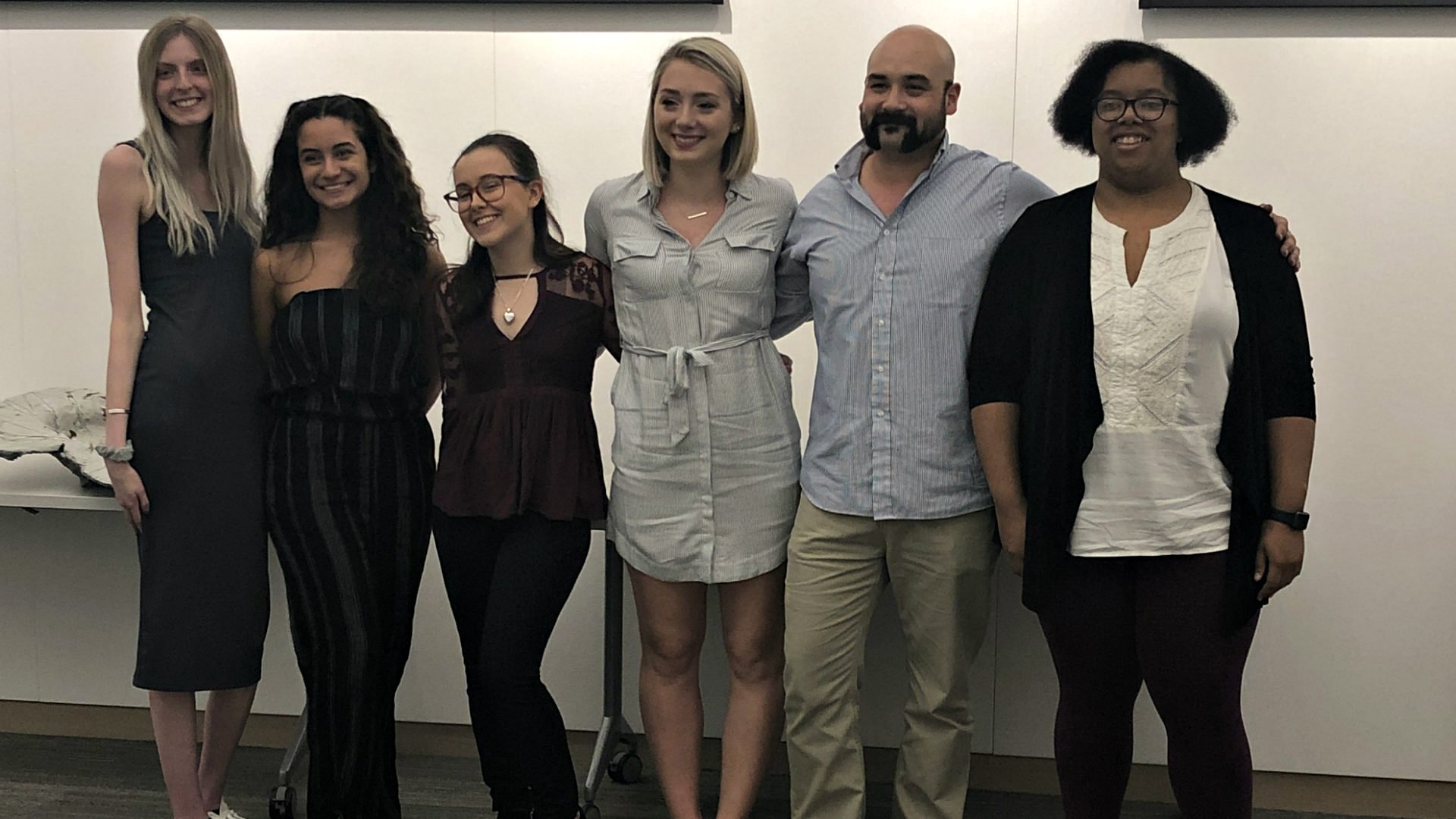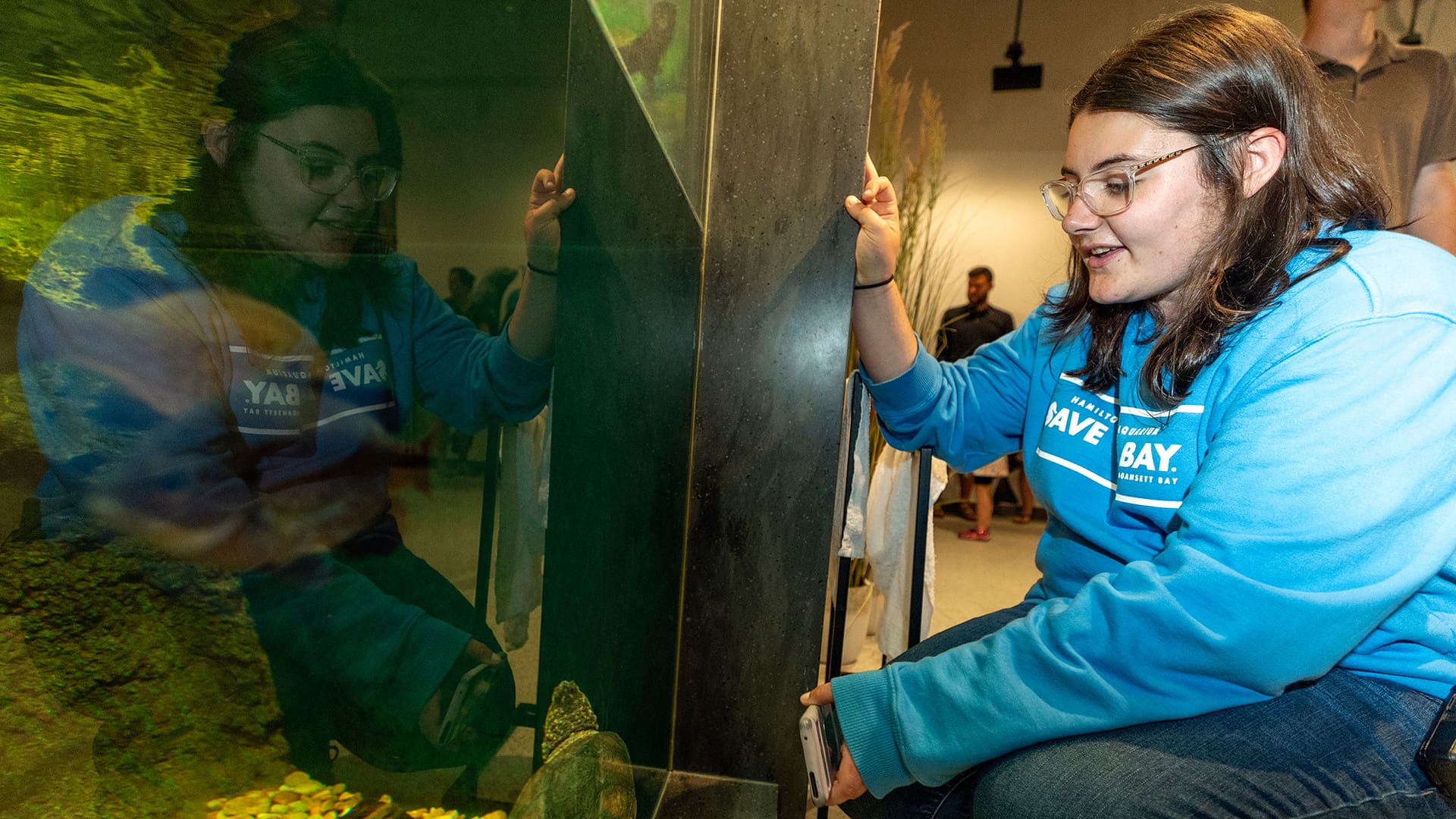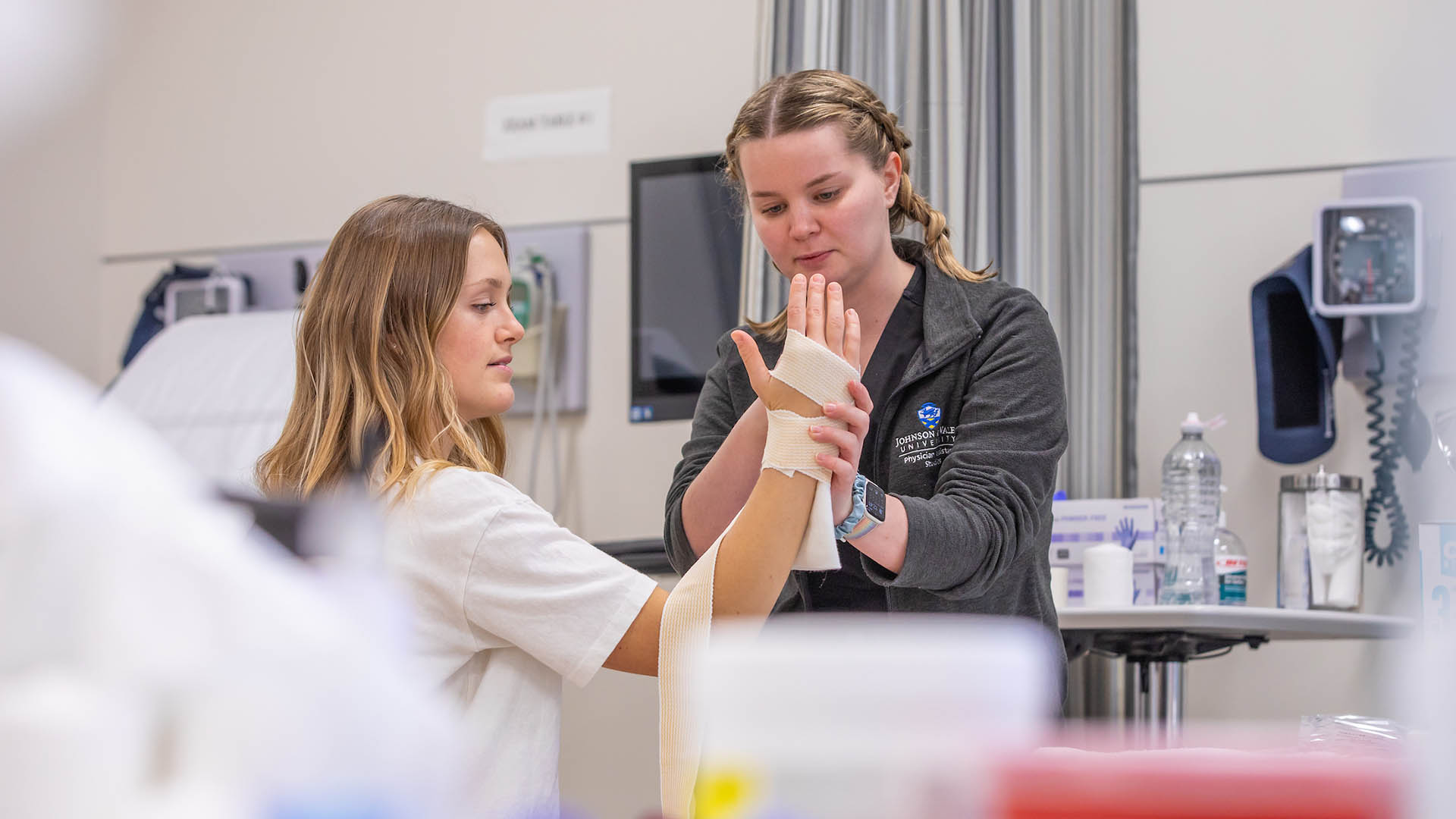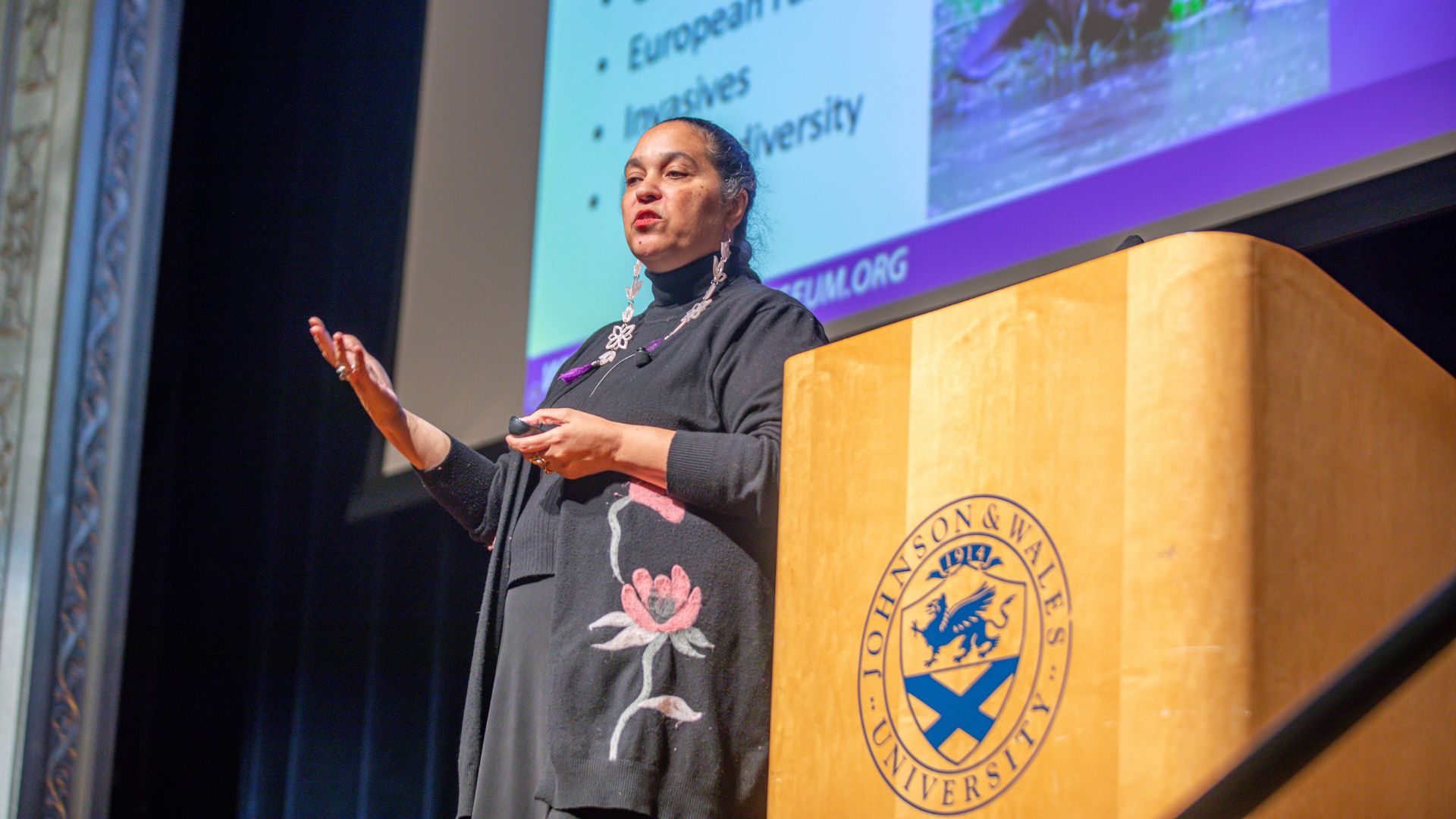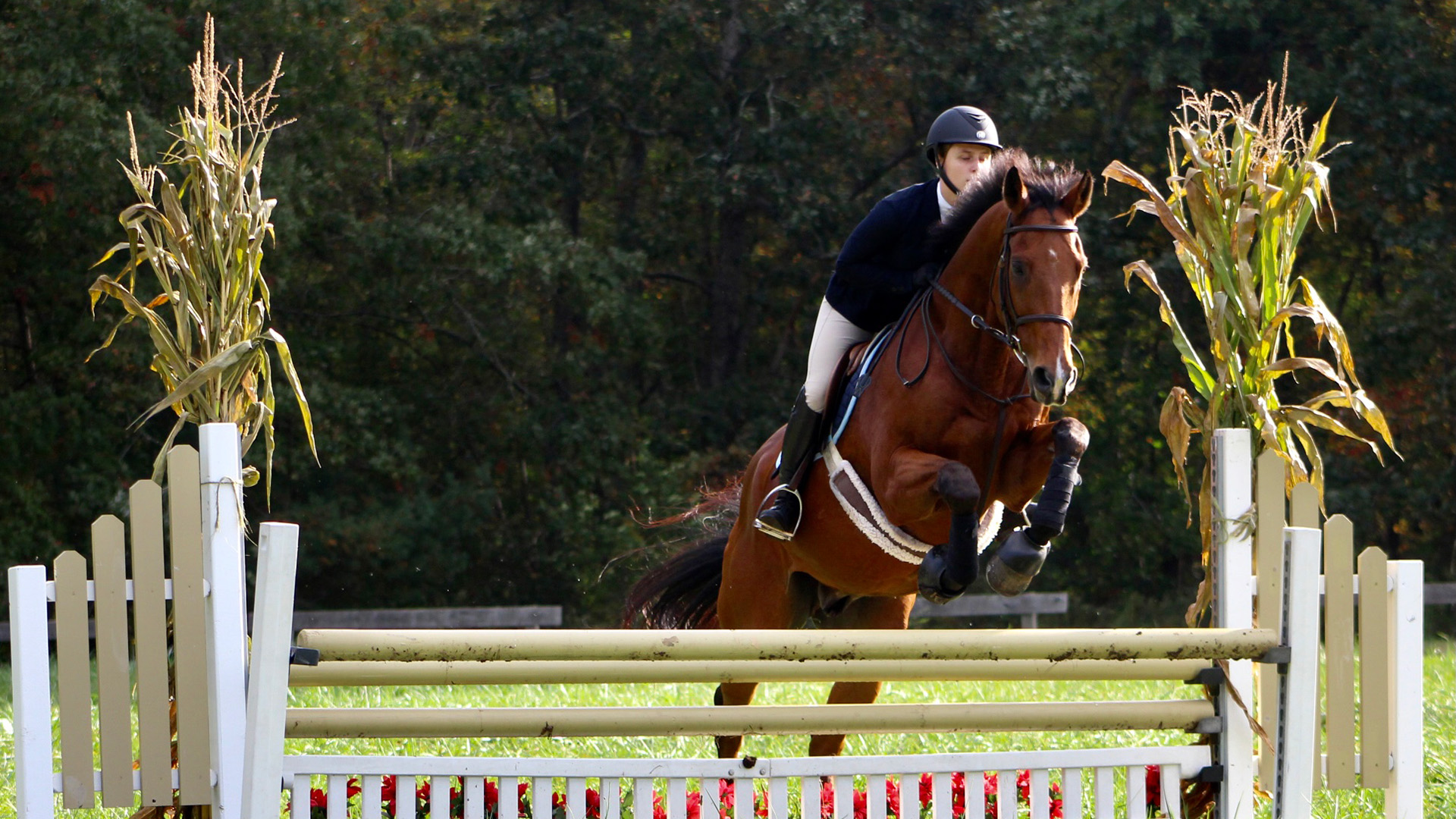Finding Beauty in Science at JWU
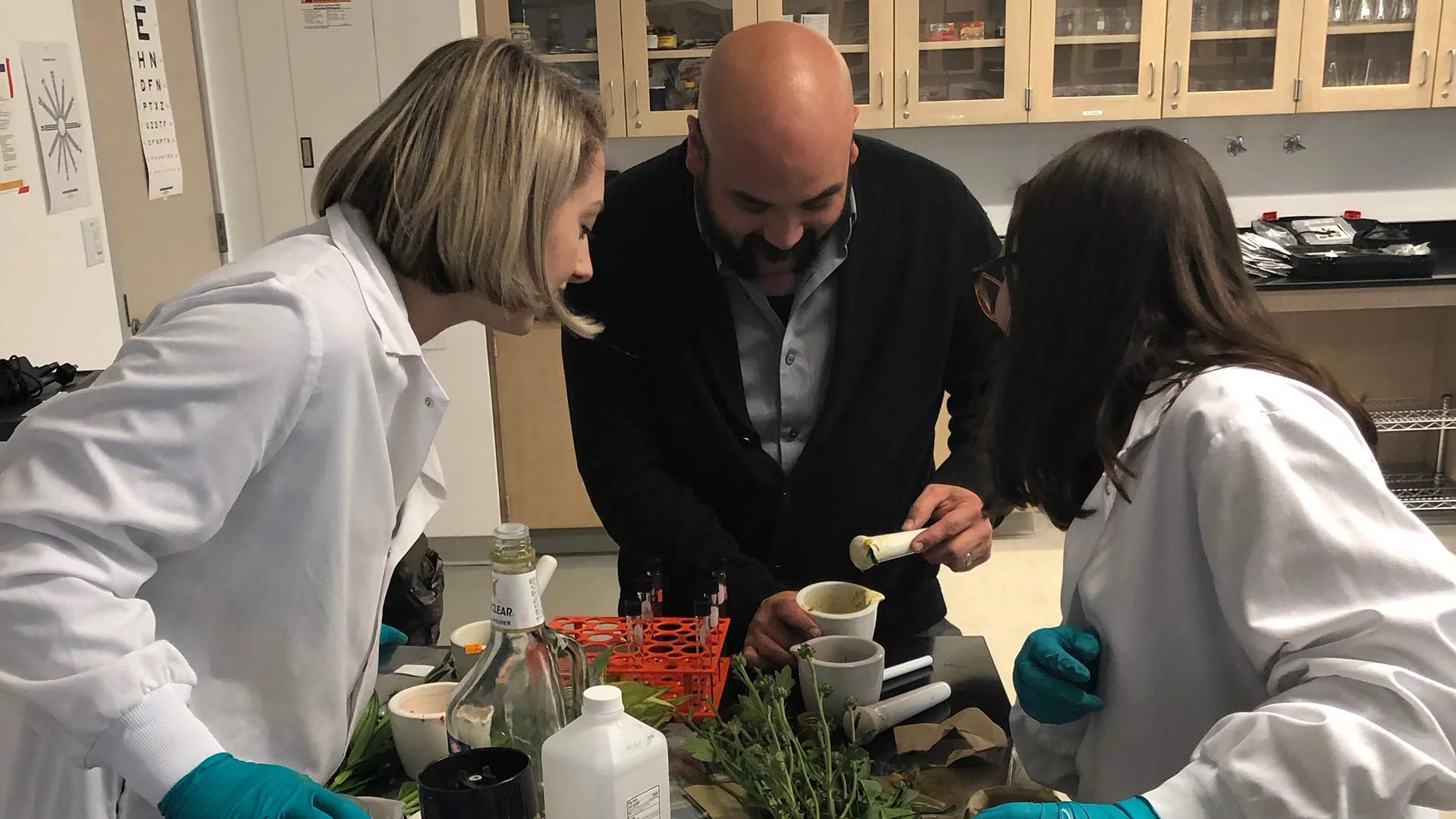
Three years ago, a prospective biology student visited the John J. Bowen Center for Science and Innovation during Accepted Student Day. As one of only two potential biology candidates, Madelyn King ’19 received a personal tour thanks to Associate Professor Michael Budziszek, Ph.D. “In the midst of him touring me around the property, we discussed and came across my love for art,” she says. “I told him that I had completed some anatomy drawings in high school, and he said, ‘send them my way.’ I did.” And that is how the Arts in Sciences club at JWU began — before she even enrolled in the program.
Once King enrolled and started classes, club planning took off. “Dr. Bud immediately knew that he wanted me to run the club,” she says. “It was kind of a whirlwind all at once.” The process was fairly involved, especially for a new student still acclimating to JWU. King and Budziszek had to present their club plans and interview with Student Involvement & Leadership. “It was very formal,” King recalls. “We were kind of on our toes waiting to hear the answer. But I think hearing about our club and how different we are, they were all for it.”
"As an undergrad going through the sciences, there's a lot of art and beautiful stuff in what we do."
For his part, Budziszek always had an interest in the arts. As a teenager, he applied and was accepted to RISD, but his father encouraged him to take a different path. “Sciences were the next best thing,” he says. That statement could draw some questions, but he firmly stands by it. “As an undergrad going through the sciences, there's a lot of art and beautiful stuff in what we do,” he says. He maintains that scientists and artists are one in the same. “To be a good scientist, you have to be kind of a good artist, and inventive and creative in order to solve problems.”
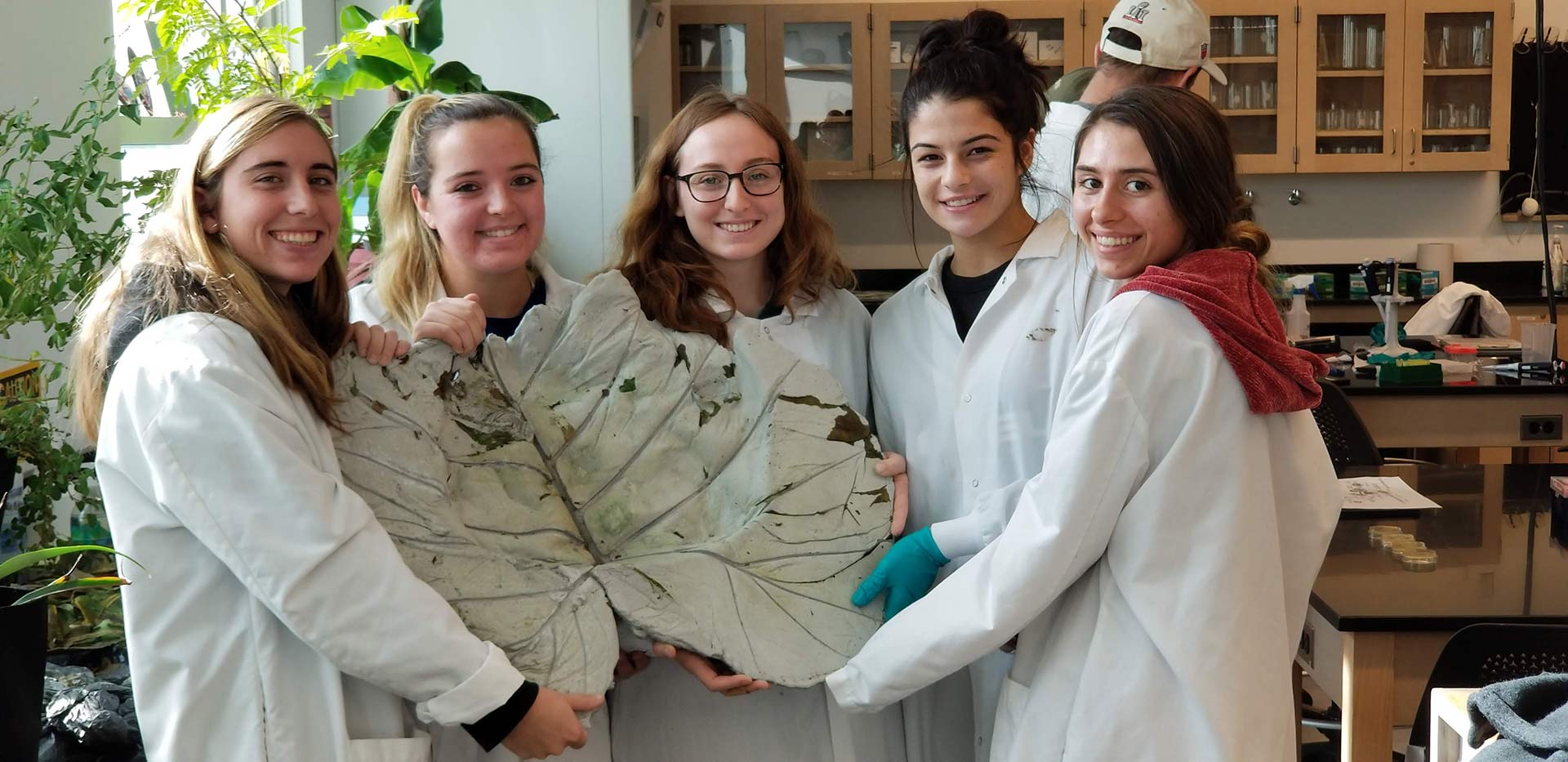
By winter term, the Arts in Sciences club was official and the group was working on projects every other week. By their third year, the group consisted of nearly 30 members. A brand new club with that kind of membership is impressive — especially considering the amount of time required. What keeps them coming back? “After academics later in the evening, like 7:00pm, we relieve some stress,” Budziszek says. “We do some artwork, but also we reinforce the science in our program.”
While some students have a strong background in art, others are novices. Others still are more artistic than they are scientifically inclined. Either way, they’re all welcome to join the club. “We open up to everybody who's interested in arts and sciences,” Budziszek says. “Every week, we have an experiment and artwork that we're going to do. But all year you’re working on your big master project. If you find that there's a technique and scientific theory that you like, you can adapt and evolve with it. So you have freedom to do whatever you like as long as it’s science and art.”
The projects the group has conceptualized and completed are impressive and run across all art mediums. Through club projects students have prepared tissue samples and taken photographs for screensavers, performed an artistic technique called camera obscura, studied DNA gels with different dyes, created crystalline structures using salt, painted with moss, carved pepper jack o' lanterns and more. Each project started with a brief lecture on the science behind the techniques, and the students were then set loose in the lab to complete their tasks.
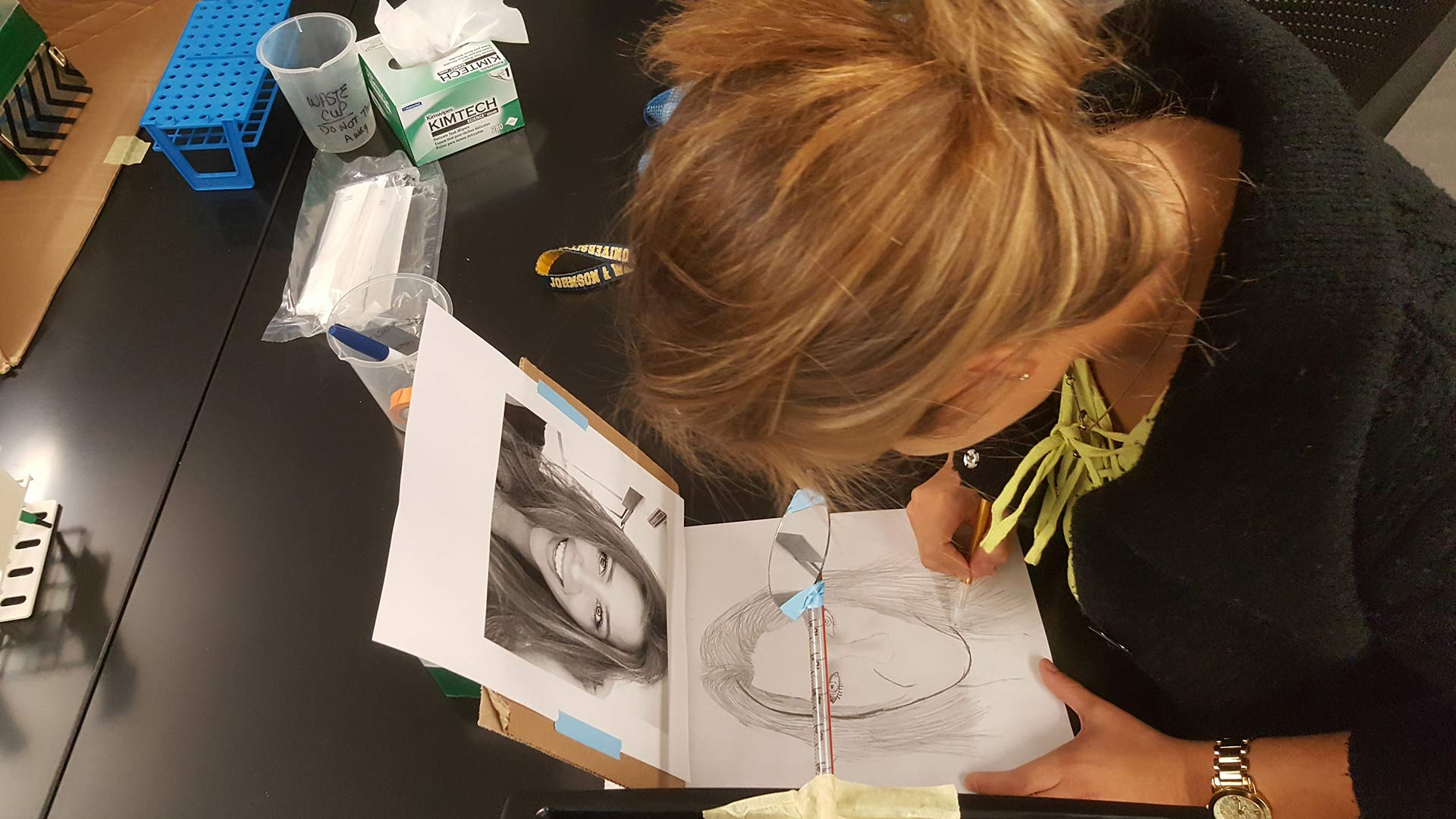
The club is very student-driven; while Budziszek helps acquire equipment and supplies, the ideas and techniques are conceptulized by the club members. “We don’t come up with an idea to do for the whole year,” King says. “If members have an idea for a project, we’ll do it. And most meetings, we actually end up doing three different things at once.”
"We do some artwork, but also we reinforce the science in our program."
King graduates this year — completing her degree in three years — and is passing the baton over to Shannon Woodard ’20 (Biology) as President for the 2019-20 academic year. However, King’s experience with the club won’t end. Her initial anatomical drawings piqued the interest of Nicole Urban, Ph.D., associate professor. Together, the two are working on a children’s book using the drawings to explain different medical disorders. “I'm taking what I've learned from the club, and taking what I came here with, and merging the two together by creating a dialogue to go along with it,” King says. “It’s explaining in layman's terms what the disease is, how it works, and how it's going to affect someone's life.” Urban is quick to give all credit to King for the project. “Maddie has an extraordinary gift for presenting scientific and anatomical structures in a beautiful and creative way,” she says. “I think her book will open avenues of conversation for children, families, and communities facing a medical challenge, and it’s a privilege to support her as she develops her artistic talent to serve others.”
There are other benefits to creating more anatomical drawings, as well: King plans to attend PA school, which requires an extensive knowledge of anatomy. “It's really helpful to be able to visualize what's in my body, what's going on,” she says.
